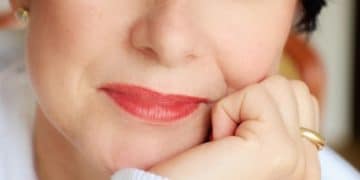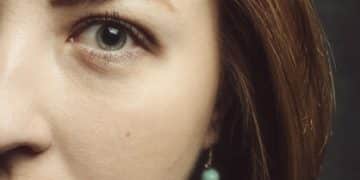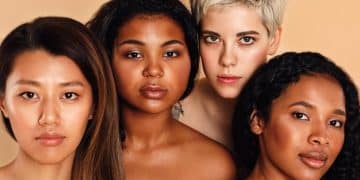Achieve a Natural Sun-Kissed Glow: 4 Bronzing Techniques
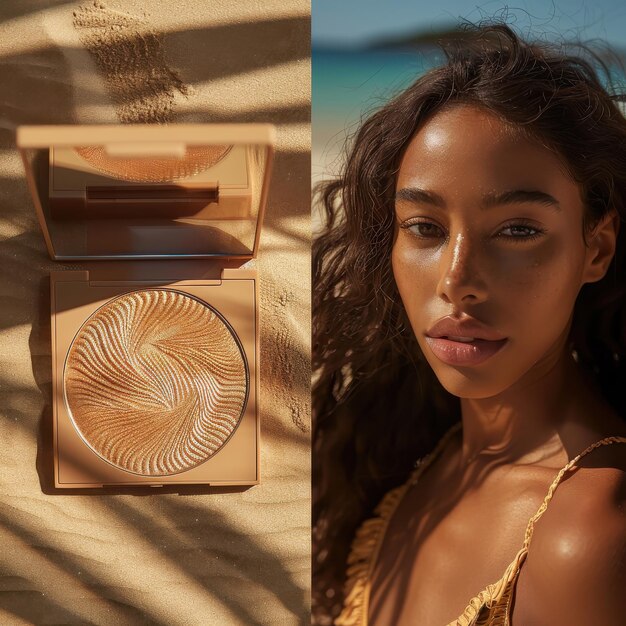
Achieve a natural-looking sun-kissed glow by using self-tanner, bronzer makeup, sun-kissed hair lightening, or a tanning bed, each offering a unique way to enhance your skin with a warm, radiant tone.
Want that sun-kissed glow without the harmful UV rays? Discover four easy and effective achieve a natural-looking sun-kissed glow with these 4 bronzing techniques to get that radiant look.
Understanding the Allure of a Sun-Kissed Glow
The sunkissed glow is a representation of summer, holidays by the water, and healthy skin. It’s a look that makes us feel more confident and energetic. But how do you acquire this sought-after look without the dangers of excessive sun exposure?
Thankfully, there are several options accessible to get a fantastic sun-kissed complexion safely. These ways range from self-tanners to bronzer tools, each giving a distinct method to boosting your skin’s allure.
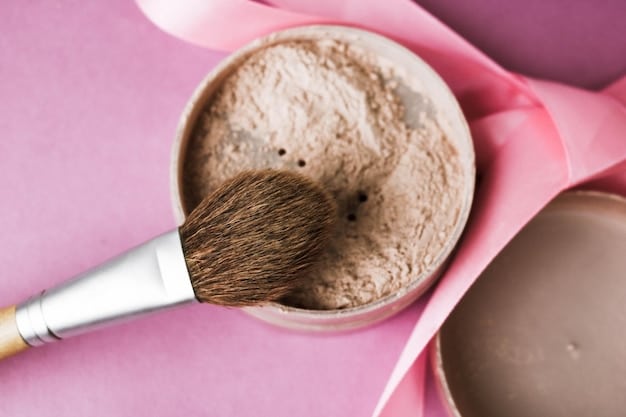
The Appeal Through Time
The sun-kissed look has long been highly valued in beauty standards, although its meaning has evolved. Previously, pale skin was considered aristocracy, while a sun-kissed complexion now represents good health and vigor. This transition shows a broader cultural shift toward valuing outdoor activities and a more relaxed lifestyle.
Historical sources indicate that ancient cultures knew the appeal of sun-kissed skin. People used natural dyes and remedies to acquire a similar look. Today, a sun-kissed shine represents more than just beauty, it reflects a lifestyle.
- Cultural Shift: From pale skin representing wealth to sun-kissed skin representing health.
- Historical Significance: Ancient societies used natural dyes to mimic a sun-kissed glow.
- Modern Symbolism: Represents a lifestyle of activity and vitality.
In conclusion, the attraction of a sun-kissed glow arises from its connection with health, vigor, and a beautiful appearance. As beauty standards have evolved, achieving this aesthetic safely has become increasingly accessible, allowing everyone to enjoy the appeal of sun-kissed skin without the hazards.
Technique 1: Mastering Self-Tanner Application
Applying self-tanner may appear difficult, but with the correct procedure, anyone can achieve a natural-looking tan. The key to a spotless finish is preparation and appropriate application.
We’ll go through the steps involved in successfully using self-tanner. This guarantees a streak-free, even tan that will enhance your skin.
Prepping Your Skin for Self-Tanner
Exfoliation is vital for attaining a uniform self-tan. Remove dead skin cells by scrubbing your body with a loofah or exfoliating scrub to create a smooth surface.
Shaving or waxing should be done at least 24 hours before using self-tanner to prevent irritation. After exfoliating and shaving, hydrate your skin with a light, oil-free moisturizer. Pay extra attention to dry areas such as elbows, knees, and ankles.
- Exfoliation: Remove dead skin cells for an even tan.
- Shaving/Waxing: Do this 24 hours before to avoid irritation.
- Moisturization: Hydrate dry regions like elbows and knees.
In conclusion, carefully prepping your skin is essential for a flawless self-tanner application. Taking these steps will help you achieve a natural-looking tan that lasts longer and looks better.
Technique 2: Bronzer Makeup for an Immediate Glow
Bronzer makeup is a quick and easy way to get a sun-kissed glow in just minutes. It is best utilized for temporary improvements, giving you a warm, bright shine without the commitment of self-tanners.
Mastering the art of bronzer makeup involves understanding your skin tone, selecting the correct products, and using them correctly.
Choosing the Right Bronzer Shade
Choosing the appropriate bronzer shade is determined by the natural skin tone. Choose a bronzer that is one to two shades deeper than your complexion for a natural appearance. Fair skin tones benefit from light, matte bronzers, whilst olive and dark skin tones benefit from deeper, shimmering hues.
Consider the bronzer’s undertones as well. Warm undertones typically look best with warm-toned bronzers, while cool undertones prefer cooler-toned bronzers. Always test the bronzer on your skin before applying it to your entire face to ensure it complements your skin tone.

Applying Bronzer Like a Pro
Apply bronzer correctly to achieve a natural-looking shine. Begin by using a large, fluffy brush to apply the bronzer to areas of your face where the sun would naturally shine such as your forehead, cheekbones, and jawline.
Blend the bronzer well to avoid hard lines and spots. Apply the bronzer in a “3” shape on both sides of your face, starting at your forehead, coming down to your cheekbones, and then down to your jawline. This strategy produces a balanced, natural-looking tan.
- Skin Tone: Select a bronzer that is one to two shades deeper than your natural skin tone.
- Undertones: Warm undertones with warm bronzers, cool undertones with cool bronzers.
- Application: Apply in a “3” shape on your forehead, cheekbones, and jawline.
In conclusion, using bronzer makeup is an effective way to get an instant sun-kissed glow. By selecting the proper shade and applying it correctly, you can create a natural-looking tan that enhances your features.
Technique 3: Sun-Kissed Hair Lightening Techniques
Getting sun-kissed hair can highlight your sun-kissed skin, resulting in a bright and revitalized look. Hair lightening techniques can enhance your hair naturally.
Many hair-lightening options are accessible, each with benefits and considerations. We’ll go over several of the most widely used methods for getting sun-kissed hair.
Natural Hair Lightening Methods
Natural hair lightening can be a gentle approach. Lemon juice has been used to lighten hair. Apply diluted lemon juice to your hair, spending some time in the sun with it on. The UV radiation then activates this. This is great, but can dry it out. Chamomile tea, gives golden highlights and is used as a natural hair lightener
Honey is a natural humectant that contains trace amounts of hydrogen peroxide. When combined with water or conditioner, honey can gently lighten hair over time while also providing moisture. Mix honey with warm water or your favorite conditioner, apply to hair, and let it sit for a few hours or overnight before rinsing. This method is gentle and nourishing, ideal for gradual lightening.
Professional Hair Lightening Options
Professional hair lightening options include salon treatments that provide faster and more dramatic results. Highlights, balayage, and ombre are popular techniques that can add sun-kissed dimensions to your hair. Highlights involve lightening individual strands of hair from root to tip, creating a multi-dimensional effect. Balayage is a freehand painting technique where color is applied to sections of the hair, resulting in a natural and blended look. Ombre involves gradually lightening the hair from dark roots to lighter ends.
- Lemon Juice: Natural lightener, but can be drying – requires sun exposure.
- Chamomile: Great and gentle for blonde hair- can give golden highlights.
- Professional Options: Faster, dramatic results with highlights, balayage, or ombre.
In conclusion, sun-kissed hair lightening can dramatically improve your overall sun-kissed appearance. Whether you opt for natural lighteners or professional treatments, each method offers distinct ways to obtain the beautiful, sun-kissed hair you want.
Technique 4: The Pros and Cons of Tanning Beds
Tanning beds provide an instant tan. To get that sun-kissed glow, tanning beds deliver intense UV radiation. But there are significant safety measures to consider before utilizing tanning beds.
We’ll explore the usage of tanning beds, including the advantages and disadvantages.
Understanding the Risks Involved
Tanning beds emit high doses of UV radiation, which can severely damage your skin and overall health. One of the most significant dangers is the increased risk of skin cancer, including melanoma, basal cell carcinoma, and squamous cell carcinoma. UV radiation causes DNA mutations in skin cells, which can lead to uncontrolled growth and tumor formation. The World Health Organization (WHO) classifies tanning beds as Group 1 carcinogens, the highest risk category for cancer-causing agents.
Tanning beds also accelerate skin aging, causing wrinkles, fine lines, and age spots. UV radiation damages collagen and elastin fibers, which are essential for maintaining skin elasticity and firmness. Prolonged exposure can lead to leathery, sagging skin and a prematurely aged appearance. Tanning beds can cause burns, eye damage, and immune system suppression, making you more susceptible to infections and illnesses.
Safe Alternatives for a Sun-Kissed Glow
Given the significant hazards associated with tanning beds, it’s crucial to consider safer alternatives for getting a sun-kissed glow. Self-tanners are a popular option that provides a realistic tan without UV radiation exposure. These products contain dihydroxyacetone (DHA), which reacts with dead skin cells to create a temporary tan that typically lasts for several days.
- Skin Cancer Risk: Significantly higher risk of melanoma and other skin cancers.
- Premature Aging: Accelerated wrinkling, fine lines, and age spots.
- Safer Alternatives: Opt for self-tanners or bronzer makeup to avoid UV exposure.
In conclusion, tanning beds provide an instant tan; they pose considerable dangers to your health. Explore safer options such as self-tanners to obtain a sun-kissed appearance without endangering your health.
| Key Point | Brief Description |
|---|---|
| ☀️ Self-Tanner | Apply evenly after exfoliating for a flawless tan. |
| ✨ Bronzer Makeup | Use a shade 1-2 tones darker, apply on cheekbones. |
| 🍋 Hair Lightening | Lemon juice in sun/Chamomile- natural highlights. |
| ⚠️ Tanning Beds | High cancer risk, use safer alternatives. |
FAQ Section
▼
Exfoliate your skin 24 hours before to remove any dead skin cells. Shave or wax at least 24 hours before, and moisturize dry areas like elbows and knees to ensure even absorption.
▼
Select a bronzer that is one to two shades darker than your natural skin tone. Fair skin tones look best with light, matte bronzers, while darker skin tones can handle deeper, shimmering hues.
▼
Yes, lemon juice diluted with water and exposure to sunlight. Chamomile tea rinses are gentle options. These processes can give subtle, natural highlights without harsh chemicals.
▼
Tanning beds emit high levels of UV radiation, increasing the risk of skin cancer, premature aging, eye damage, and immune system suppression. They are classified as Group 1 carcinogens by the WHO.
▼
Safer alternatives include self-tanners, which use DHA to create a temporary tan without UV exposure, and bronzer makeup, which can provide an instant glow. These minimize the risk of harm.
Conclusion
Achieving a natural-looking sun-kissed glow is easy with the right techniques. Whether you opt for self-tanner, bronzer makeup, sun-kissed hair, or explore safer alternatives to tanning beds, the key is to prioritize skin health. Embrace these methods to enhance your natural beauty safely!

